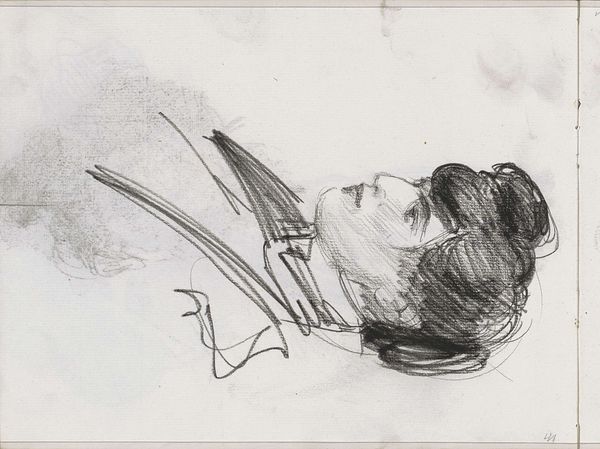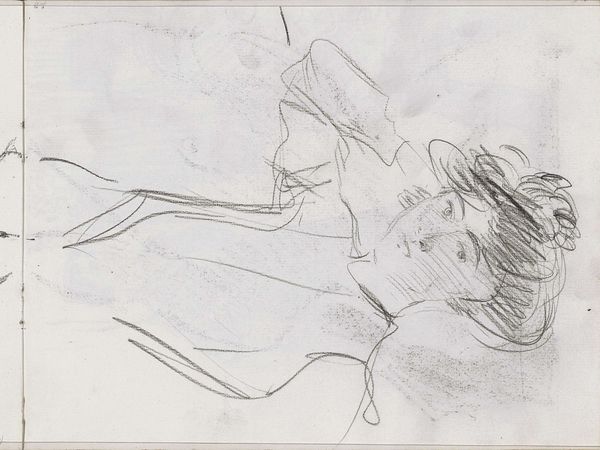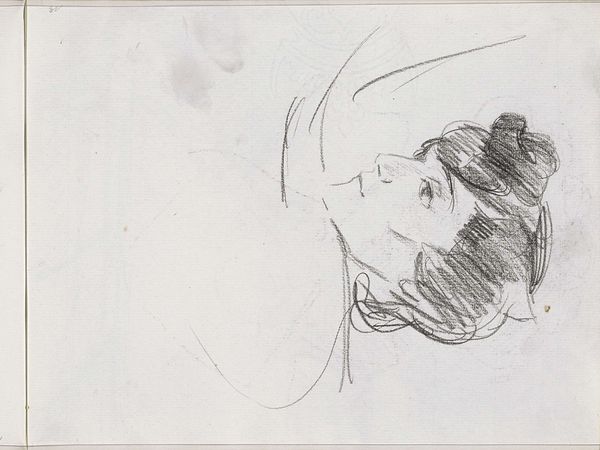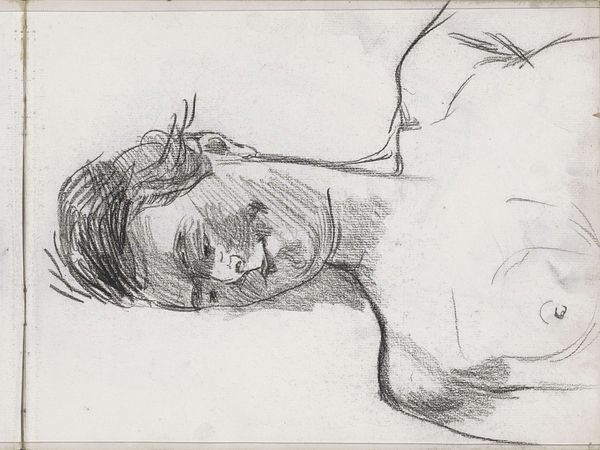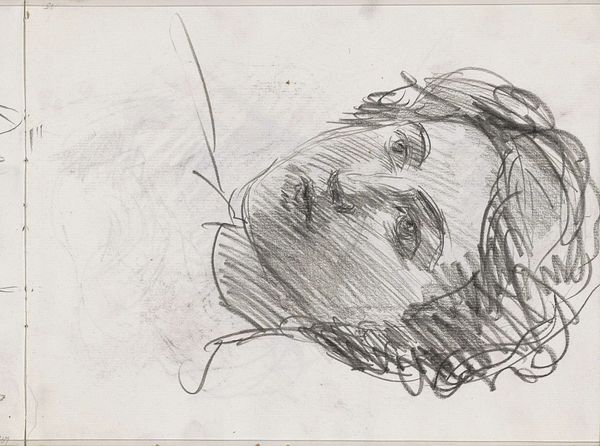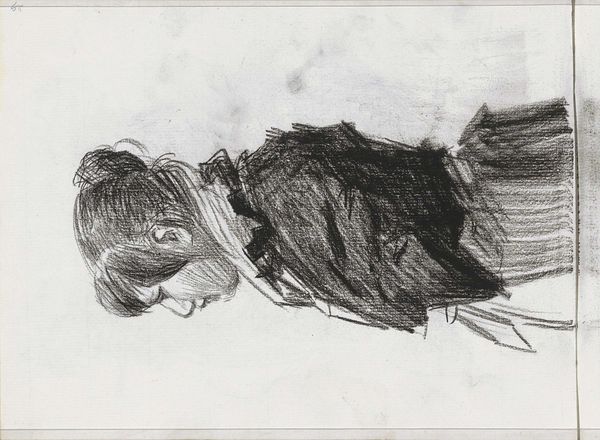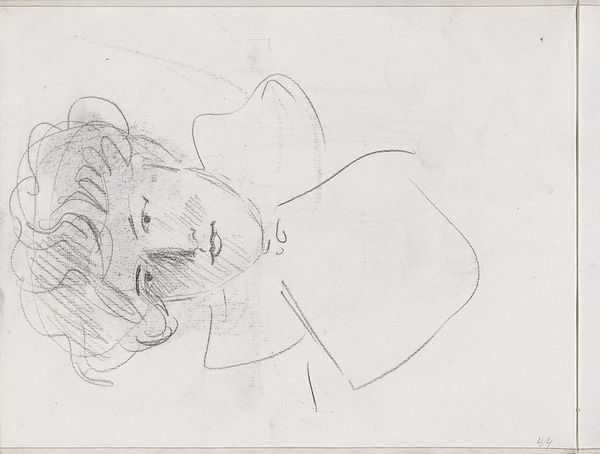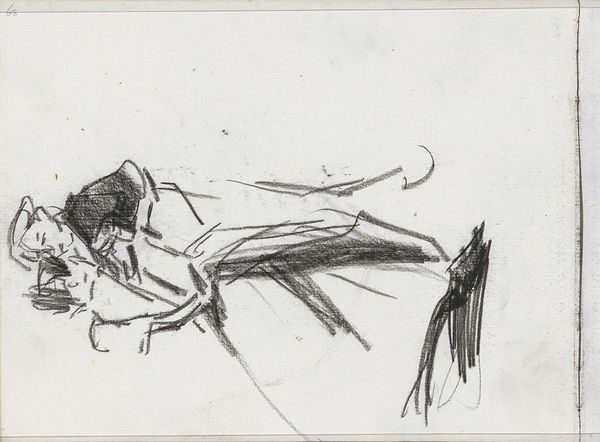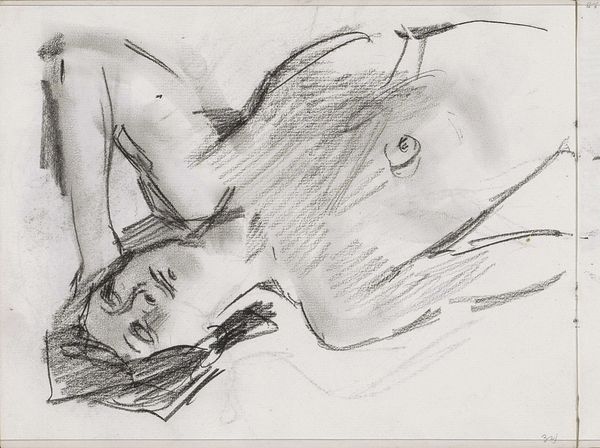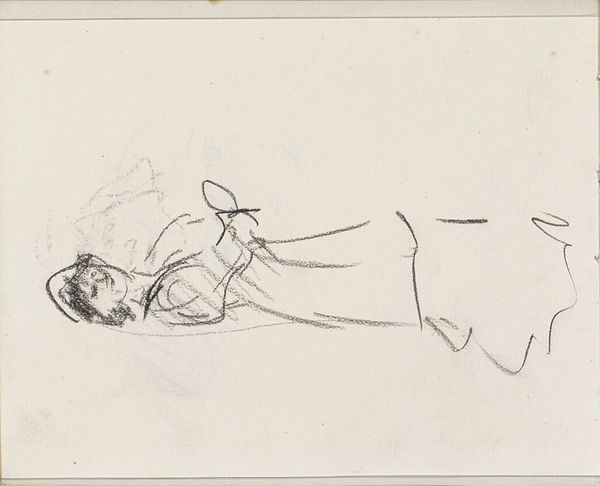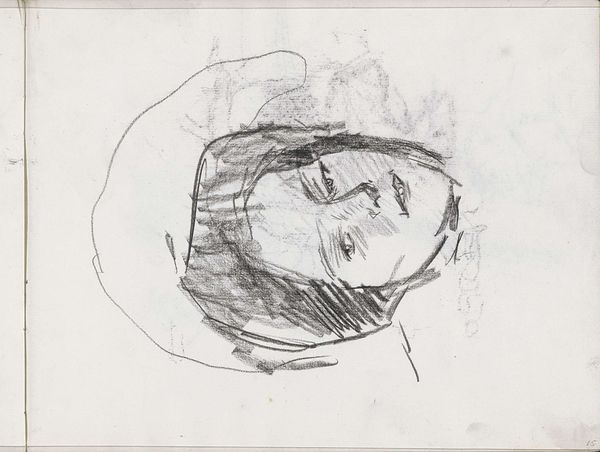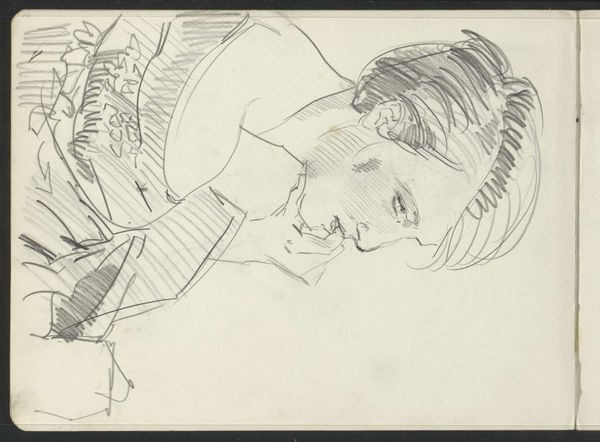
Copyright: Rijks Museum: Open Domain
Curator: This is Isaac Israels’ “Vrouw, naar beneden kijkend,” or “Woman Looking Down,” a pencil drawing, created sometime between 1875 and 1934, and now held in the collection of the Rijksmuseum. Editor: My immediate impression is the artist's focus on line. The hurried marks of the pencil give it a sense of immediacy, as if capturing a fleeting moment of introspection. It almost feels melancholic. Curator: Indeed. Looking at Israels' social circles at the time, he often sketched those involved with the fashion industry—models, seamstresses—rendering them in quiet moments amidst the bustling garment workshops. The materials employed, humble pencil and paper, speak to the accessibility of art-making for observing and representing everyday life. Editor: True, but observe how the structural use of hatching defines the planes of her face and clothing. The geometry creates a palpable tension between realism and abstraction; the subject is both present and elusive. See how the use of compressed charcoal provides dimensionality to her hair? It’s not simply a document. Curator: But what labor does it obscure? Israels often worked rapidly. Think of the exploitation inherent within the fashion industry that these works so fleetingly captured. These were working women, after all, contributing to a capitalist system which the artist simultaneously benefited from and observed. Editor: Perhaps. But regardless of socio-economic factors, formally, the gaze directed downwards implies introspection. The line becomes a signifier of something unspoken. Curator: I'm curious about what was implied in such sketches made in garment workshops. Consider, these working-class women probably posed without compensation for their time. Did the means of pencil drawing democratize art, or did it perpetuate a pre-existing economic structure? Editor: Interesting, although focusing again on the artwork itself, the restricted palette enhances the sense of isolation, stripping away color to emphasize form and shadow. I read the descending lines as reflective. Curator: And I, given his social milieu, think of the cost of artistic expression against labor. Both views inform how we understand art. Editor: Precisely, each lens adds nuance. What appears simple holds multitudes.
Comments
No comments
Be the first to comment and join the conversation on the ultimate creative platform.
